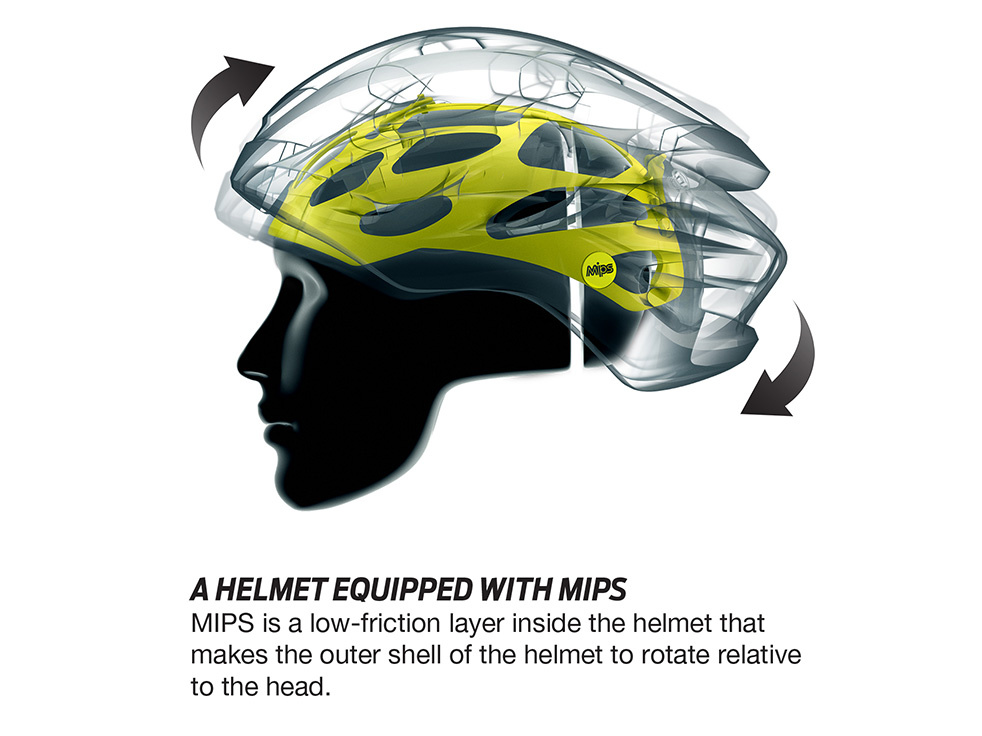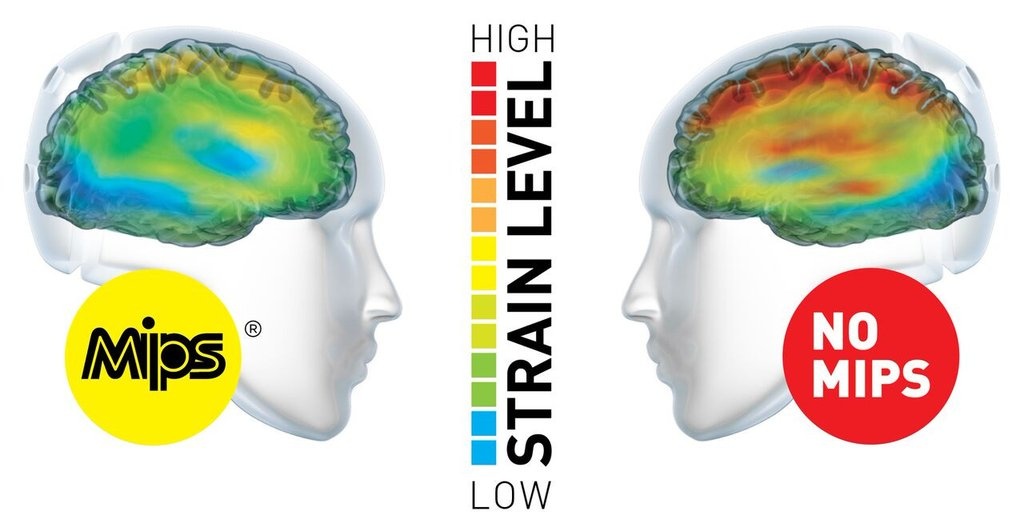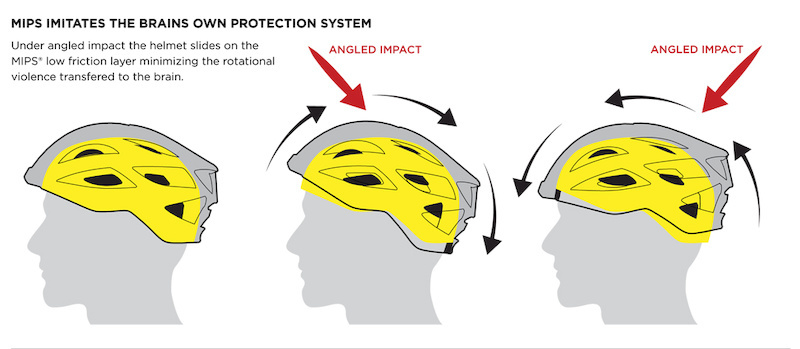After selling helmets for many, many years and getting asked countless questions about helmets. The number one question I will typically get is “What is Mips?” The Multi-Directional Protection System (Mips) is designed to add protection against rotational motion transferred to the brain. Rotational motion affects the brain and increases the risk for minor and severe brain injuries. When implemented in a helmet, the Mips brain protection system can reduce rotational motion by redirecting energies and forces otherwise transferred to the brain.
The core of the Mips is a low friction layer that allows the head to move 10-15 mm relative to the helmet in all directions, reducing rotational motion to the brain. The MIPS makes your helmet safer and adds protection.

However, the core to a safe helmet is a proper-fitting helmet. The helmet should try to “mimic” the shape of the user's head but also be not too big or too small. The helmet should fit snug on your head and be centered on your forehead about 1-2 fingers above your eyebrows. Most helmets are measured in centimeters. So, if you are unsure of your size, take a tailor's tape and center it on your forehead and wrap around your head just above your ears. Most helmets fall in this size range: Small (51-54cm), Medium (55-59cm), Large (59-62cm), and X-Large(62+cm).
If you are ever unsure of your size please visit Hard Headed and have one of our experts guide you into a helmet that is perfect for your head and your budget!

Strain in the Brain
Rotational motion from an angled impact can cause strain in the brain that can lead to tearing in the brain tissue. The illustration is based on data gathered using sensors inside the crash test dummy heads. The dummy head, wearing a helmet, was subjected to an angled impact in a test rig at the Mips lab in Sweden.
The illustration above shows the strain in the brain from an angled impact when the dummy head is wearing the same type of helmet – with and without Mips.
If you ride, bike, or ski and fall and hit your head, you are likely to experience an oblique impact. The moment your head hits the ground at an angle, rotational motion can make the head rotate more or less, depending on the impacting object or surface. The energy from the impact can be directed further into the head, which can cause brain injury. Rotational motion is thus the result of oblique impacts to the head.
The brain is more sensitive to oblique impacts versus straight impacts. Oblique impacts are also much more common. But most helmets on the market today are only tested and approved for straight impacts, even though these kinds of accidents are far less common. (Mips Protection)

The MIPS test rig is developed for testing angled impacts to simulate a fall during a crash.
Scientifically Proven
Depending on what type of helmet is tested, the helmet is dropped from 2,2–3,1 meters onto a 45-degree impact angle covered with grinding paper. Three different types of impact points are tested, and all helmets are tested in all sizes.
Data is gathered using nine accelerometers inside a Hybrid III crash test dummy head and analyzed using a computer model known as the Finite Element Model. The same helmet model is compared with and without the Mips to make sure that the helmet passes the strain reduction criteria Mips have on all approved helmets.
Mips conducts research in their own lab and have carried out over 50,000 helmet tests over the years. The R&D process is one of the cornerstones of commercial success and their view is that they possess market-leading expertise in our field. As of December 31, 2021, they had over 300 patents in more than 50 patent families.
Mips R&D projects include innovation for products and processes. Among other things, they develop better materials and components, as well as more efficient test and production processes. Mips has a strong R&D organization with solid expertise in research, development, and technology.
Mips have had the pleasure of noting a growing awareness of rotational movement and its possible consequences. This growing awareness entails increased interest from many organizations and regulatory authorities’ working groups that work with helmet standards. They are also seeing increased demand from consumers. In 2021, over 140 brands offered helmets featuring the Mips® safety system on the market. (Mips Protection)

Should you have Mips?
In conclusion, the Multi-Directional Protection System (Mips) is a crucial innovation designed to mitigate rotational motion transferred to the brain during impacts, thereby reducing the risk of brain injuries. By incorporating a low-friction layer into helmets, Mips enables the head to move independently of the helmet, effectively diminishing rotational forces.
For all your helmet needs, whether it's for cycling, skiing, or any other activity, Hard Headed remains the go-to destination, ensuring both safety and comfort. Choose a MIPS-equipped helmet for unparalleled protection and peace of mind. Visit Hard Headed in downtown Steamboat Springs and have one of our experts get you fitted into the helmet of your dreams before the Emerald Mountain Epic on August 3rd & 4th.
Work Cited
Mips Protection. “What is Mips? - The meaning of a Mips helmet.” Mips, https://mipsprotection.com/what-does-mips-mean/. Accessed 2 May 2024.


Leave a comment